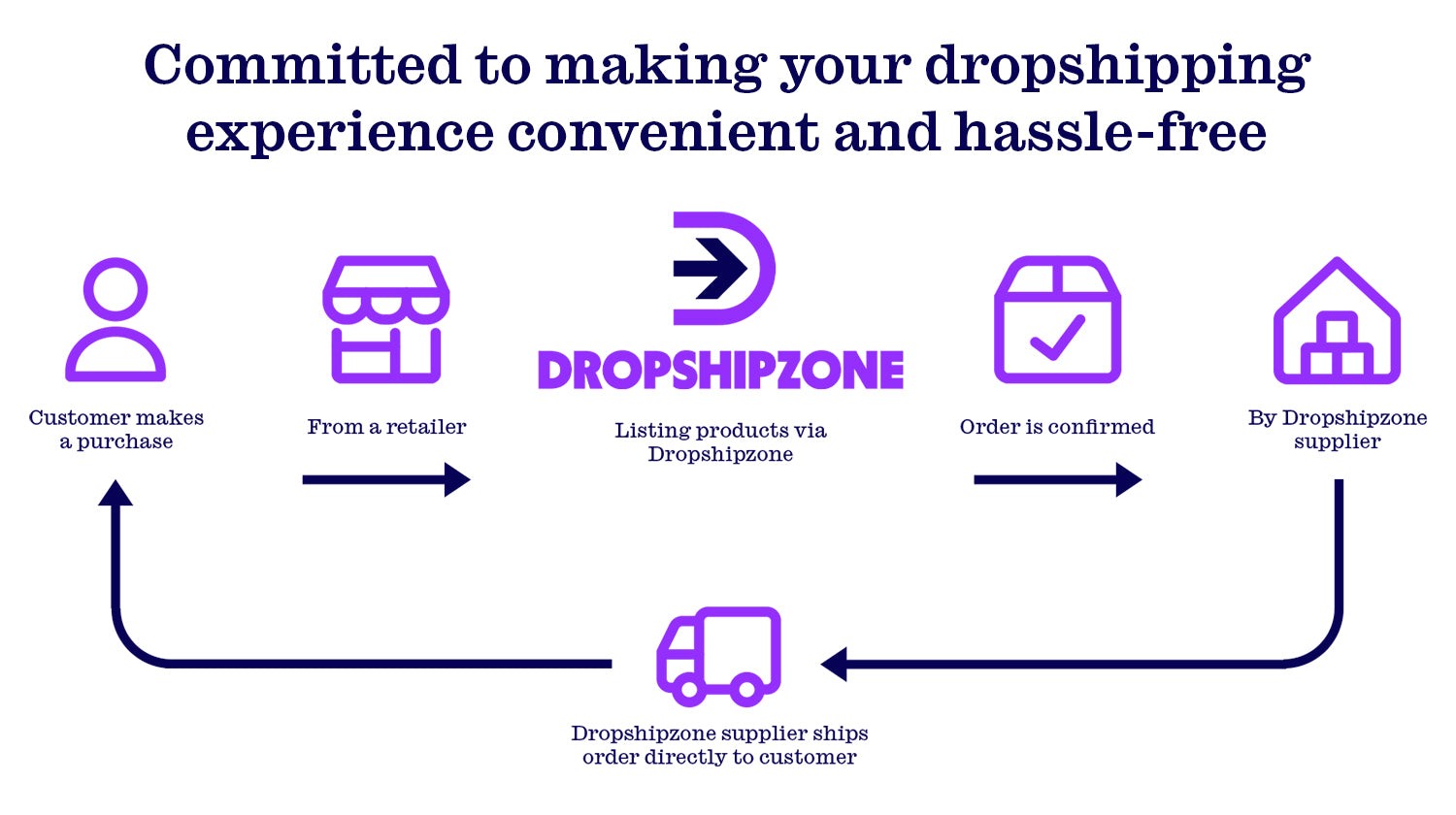How to Handle Long Shipping Times when Dropshipping
Shipping is one of the most important aspects of ecommerce. Massive marketplaces like Amazon have shaped customer expectations around delivery and returns with free and one-day shipping offerings. However, global supply chain management has not been able to keep up with these demands, with global supply chain disruptions tripling from 2019-2021 due to the Covid-19 pandemic and the Russia/Ukraine war. Many modern businesses use a just-in-time manufacturing model, which means products are sourced, manufactured, assembled and shipped just in time to meet customer demands. While this model intends to save processing time and money, it can only work if there is a continuous flow through the supply chain. These compounding crises caused six out of ten companies to lose sales from out-of-stock products, damage to brand reputations and customer relations, and an estimated loss of $184 million USD in average revenue for businesses (Shopify Commerce Trends Report, 2023). Despite these issues, customer demand has not decreased, with 81.4 per cent of Australian consumers unlikely to buy from a business following a negative delivery experience. 71 per cent of Australians rank high shipping costs as the biggest barrier to becoming repeat customers. In comparison, 41 per cent rank the quality of delivery as a key reason why they regularly buy from the same brand.
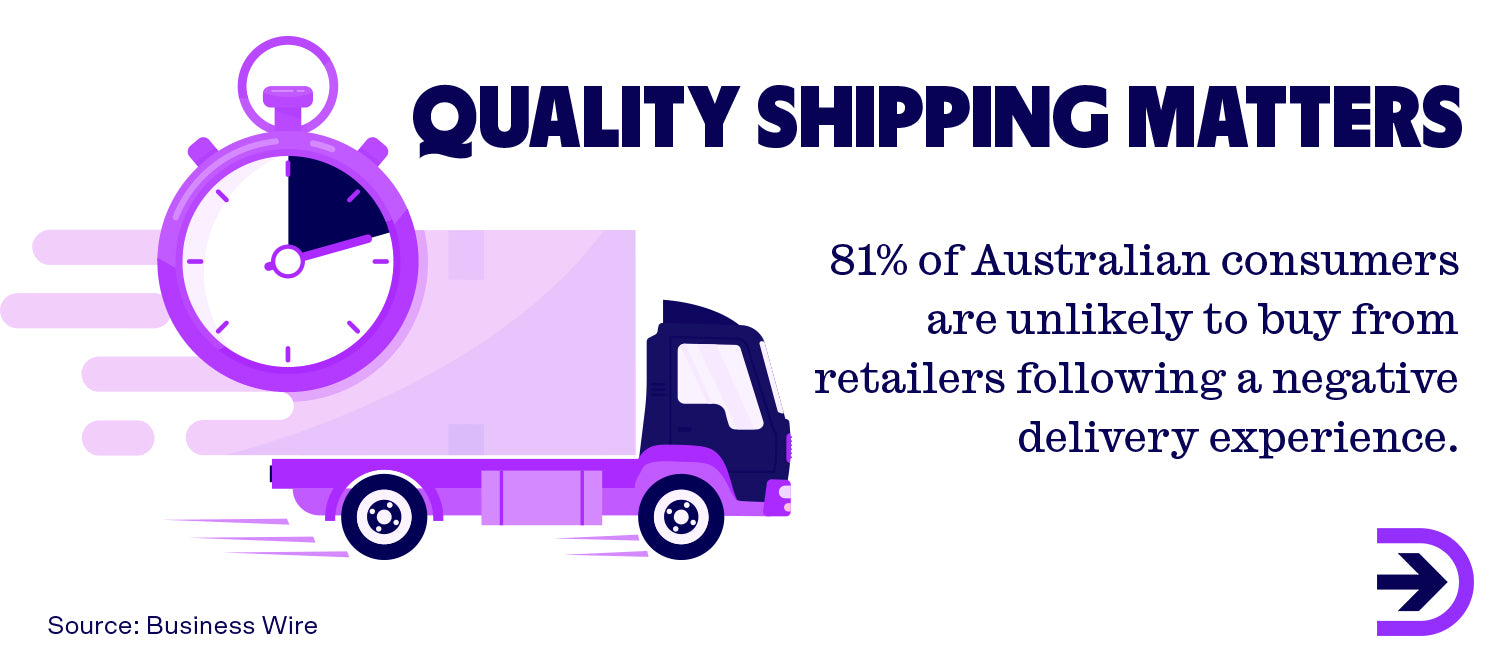
With these supply chain disruptions set to continue well into 2023, suppliers and retailers face a challenge: how do companies retain customer loyalty in the face of long shipping delays?
How Long Can a Drop Shipment Take to Reach My Customers?
There are three main modes of shipping - land, air and sea. The sea is the cheapest mode of transport, but also the slowest and the riskiest. Air transport is the fastest and ideal for fragile and perishable goods. Land may include shipping by rail or car and is suitable for local areas within the country. The chosen mode of transport greatly affects product delivery times.
90 per cent of the world’s merchandise is shipped by sea. The average shipping time for sea freight can range between 20-45 days. Typical shipping times for air freight range between 5-10 days (1-3 days express), and standard land shipping ranges from 2-8 days. These average times do not account for delays.

What Causes Shipping Delays?
There are many circumstances that may cause shipping delays, ranging from international troubles to local supply chain issues. Here are some of the most common causes of shipping delays.
Global emergencies
Wars, pandemics, and other worldwide events can cause major delays across the entire supply chain. Notable events that have affected shipping over the last decade include:
-
The Covid-19 pandemic: Maritime trades and services were heavily affected as merchandise demand dropped, ports became congested, and freight rates soared.
-
The Russia/Ukraine war: Ships that operate in the area find themselves trapped at closed ports or at anchor. Ukraine’s major ports were closed, and Russian vessels have been banned from entering UK and EU ports. A ban on Russian oil affects the availability of bunker fuel. Each of these issues impacts global trade, as well as deeper political consequences.
-
The Suez Canal blockage: The Suez Canal is a vital international shipping passage, with approximately 12 per cent of global trade passing through each day. In 2021, the Ever Given vessel ran aground and became lodged sideways. The ship was stuck for six days, during which time it was estimated to hold up $9.6 billion dollars worth of trade.
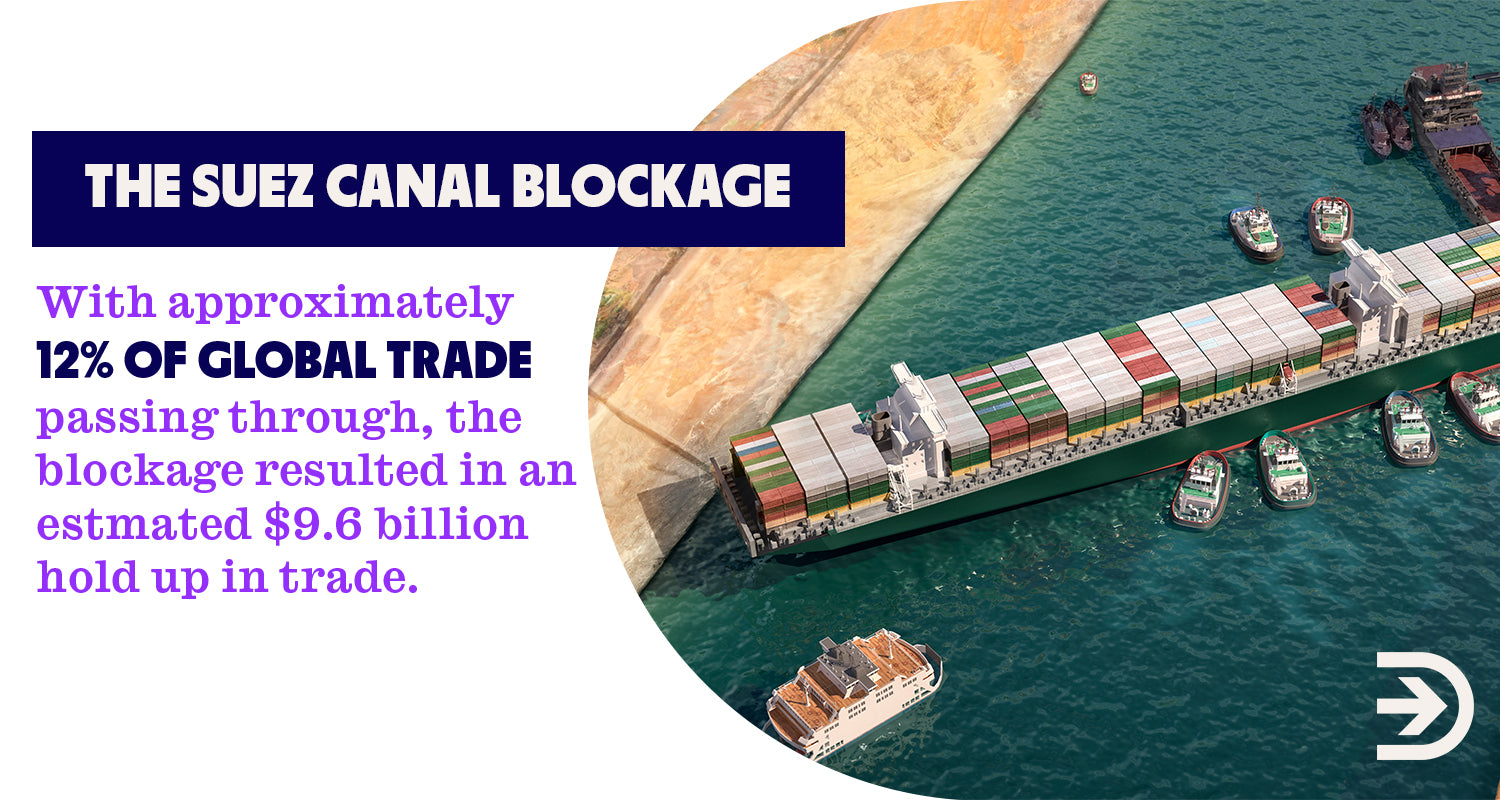
Natural disasters/extreme weather conditions
It can be dangerous to operate ships, planes and other vehicles during extreme weather conditions. On the road, drivers cannot pass roads affected by ice or flooding. Airlines may be forced to cancel flights due to dangerous weather. Vehicles at sea will be forced to take longer routes to avoid storms. The impact of extreme weather can cause the destruction of warehouses or vehicles, closure of main trade routes, and other significant delays. The 2019-20 Black Summer Bushfires in Australia caused approximately $164 billion in damages as a result of road closures, power outages, flight cancellations and production halts. Typhoons, tsunamis and snowstorms are other disasters that can affect shipping.
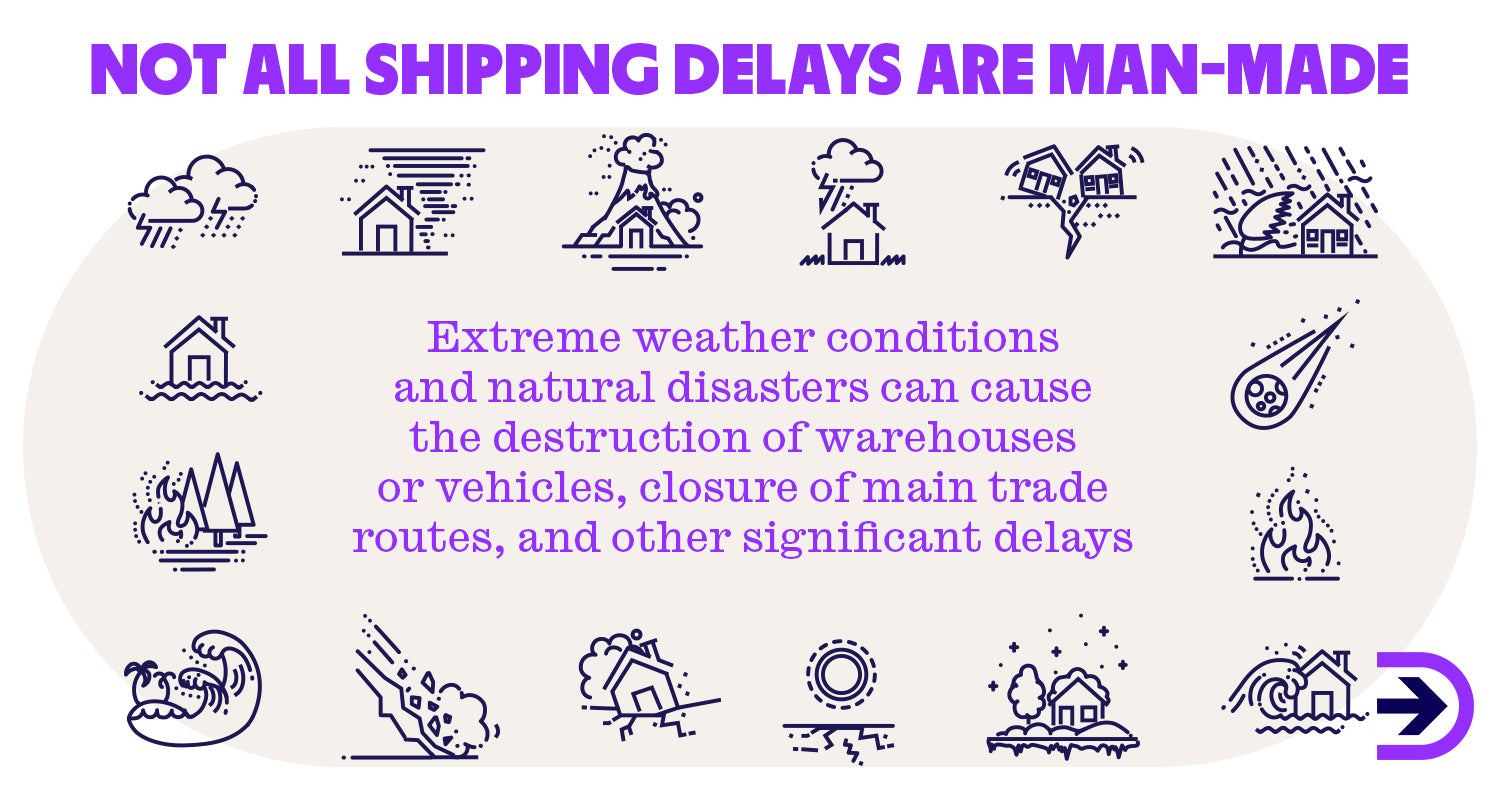
Cybersecurity risks
Digitisation can help increase efficiency and decrease delays along the supply chain. However, the increased reliance on technology can leave some industries open to cyber-attacks and data theft. An attack on UK delivery service Royal Mail in Jan 2023 caused a severe service disruption with more than half a million packages estimated to be left in limbo. Another logistics company Expeditors International of Washington experienced a three-week service outage in 2022 and the company was still dealing with the fallout over 14 months later, battling in court with long-term customers over lost business. As logistics begin to rely more heavily on AI and other technology, businesses will also need to focus on cybersecurity.
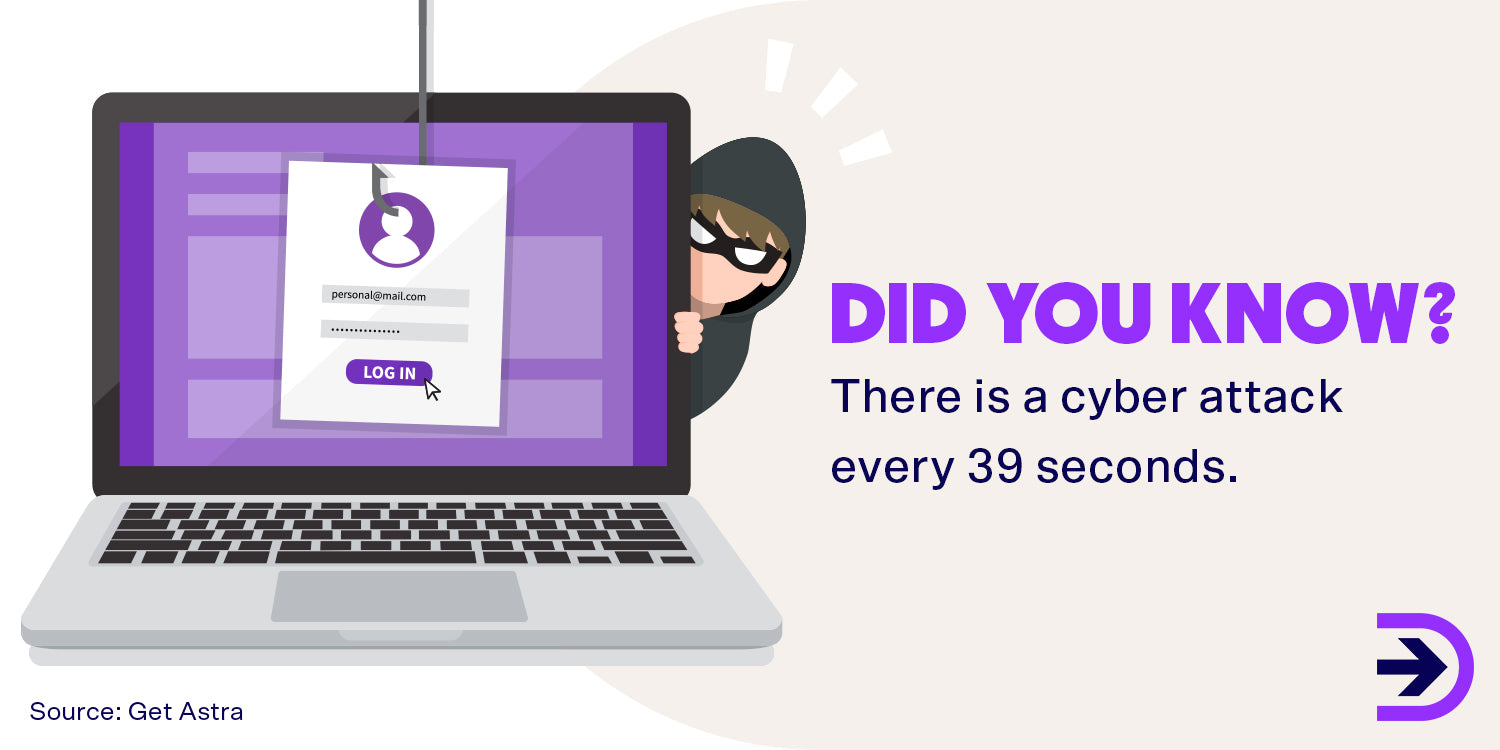
Incorrect documentation
Not having the correct documentation for shipping can lead to delays throughout the shipping process. Common errors include missing paperwork, inaccurate descriptions, illegible writing, improper labels, missing licences and incorrect shipping information.
Peak season
Peak shipping season typically begins in August during back-to-school season and continues through November as businesses prepare for the holidays. Busy seasons include major holidays such as New Year’s Day, Chinese New Year, Easter, Valentine’s Day, Halloween, Thanksgiving and Christmas. Before and during peak season, high consumer demand makes securing a space on transport vessels difficult and expensive.
What Is a Good Shipping Time for Dropshipping?
In the early days of dropshipping, dropshipping suppliers were largely confined to the USA. This was a problem for early ecommerce adopters due to expensive shipping fees. In 2010, Alibaba released Aliexpress, which simplified the process of sourcing Chinese suppliers, making it easier and cheaper to ship from China instead of the US. Unfortunately, retailers now had to deal with increased shipping times, which left customers frustrated. These days, dropshipping suppliers can be found all over the world, giving retailers plenty of product options.
Due to this diversity of suppliers and products, ideal dropshipping delivery times can vary. However, research shows that customers have limited patience when it comes to slow shipping times.
-
Only 33 per cent of shoppers are willing to wait more than three days for express shipping.
-
90 per cent of consumers expect two or three-day shipping to be standard.
-
Between the growing cost of living and the increasing popularity of apps such as Temu, customers are more willing to wait for slower deliveries in exchange for free shipping.
-
Customers are reluctant to pay more than $7 for expedited shipping.
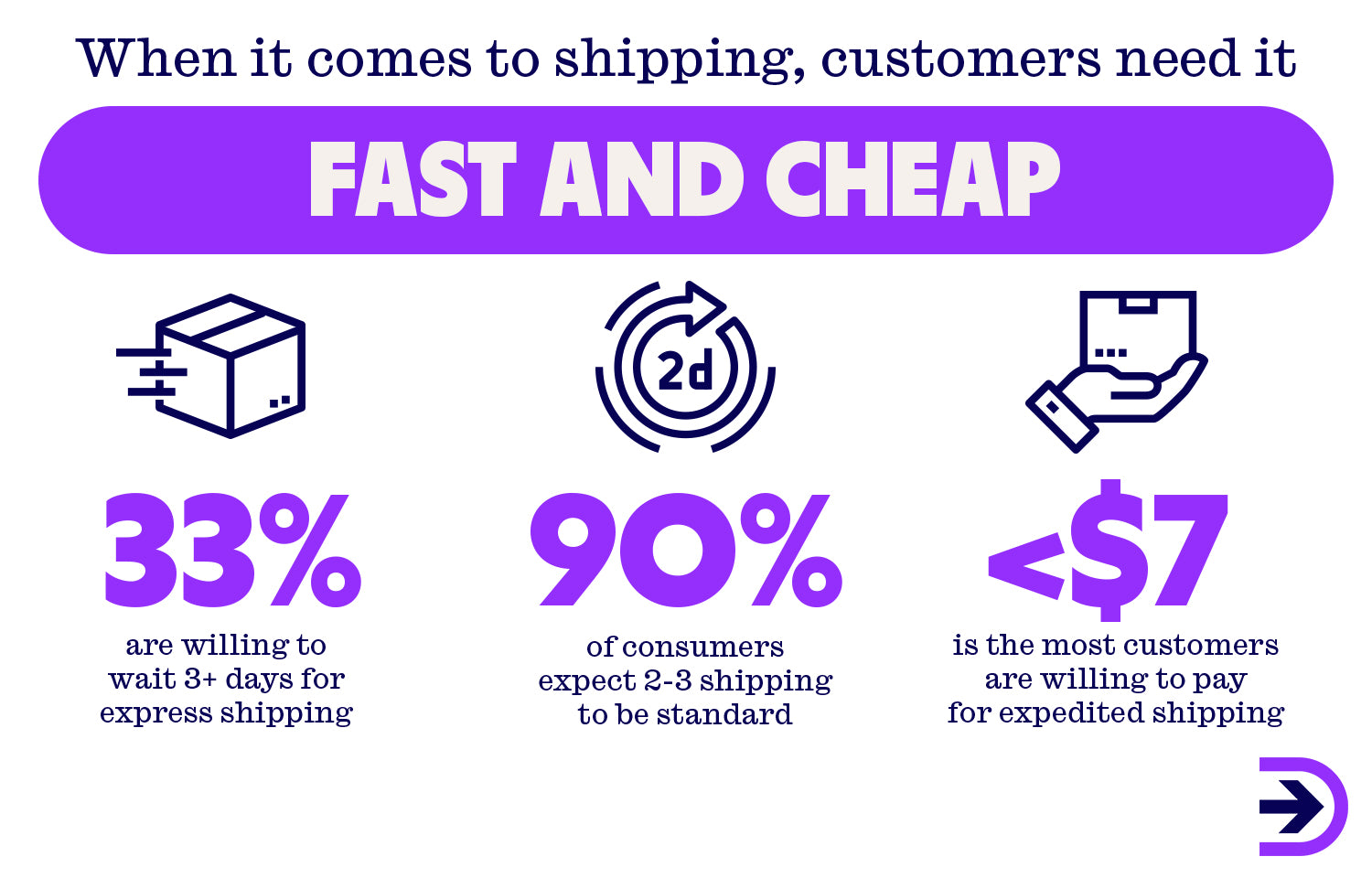
How to Combat Long Shipping Times for Dropshipping?
Tip 1: Provide Customers With Shipping Times in Advance
It’s important to be transparent about your expected shipping times. While long shipping times can be a turn-off for customers, providing misleading shipping times can have bigger consequences such as negative reviews, chargebacks and refund requests. While long shipping times may drive away some customers, there are many reasons a customer may prefer the wait:
-
You have a niche product.
-
The product is hard to find locally.
-
You offer free shipping.
-
You have a solid reputation backed by positive reviews.
-
Your product is a must-have impulse purchase.
Being transparent about shipping times sets realistic expectations and prevents customers from asking for refunds. One of the ways you can do this is by shortening any large estimated shipping windows. For example, if your products take 4-30 days to arrive, set your estimated delivery time to 15-30 days. Customers will be less intimidated by the large window and will be pleasantly surprised if the package comes earlier than the estimated delivery date. Keep these numbers consistent across listings.
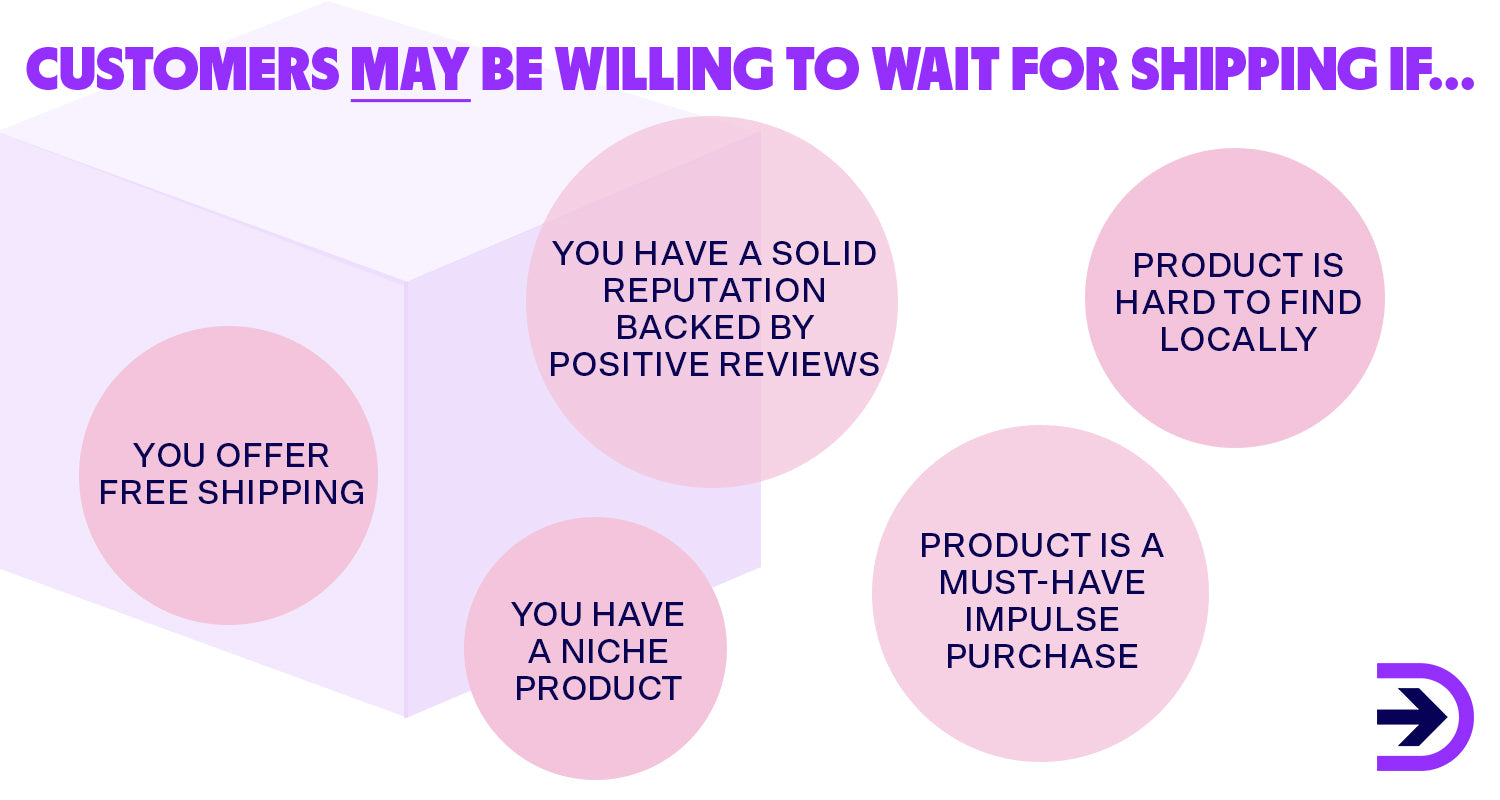
Show your estimated shipping times in multiple places. You can include shipping times in your FAQ page, a dedicated shipping policy, and as a reminder during checkout.
Tip 2: Provide Excellent Customer Support
Good customer service is essential for a successful dropshipping business. 71 per cent of Australians expect a same-day response to online enquiries, and only one in five customers will forgive a bad experience if a business has very poor customer service. However, when customer service is excellent, 78 per cent of customers will do business with a company after a mistake and 93 per cent of customers are likely to make repeat purchases.
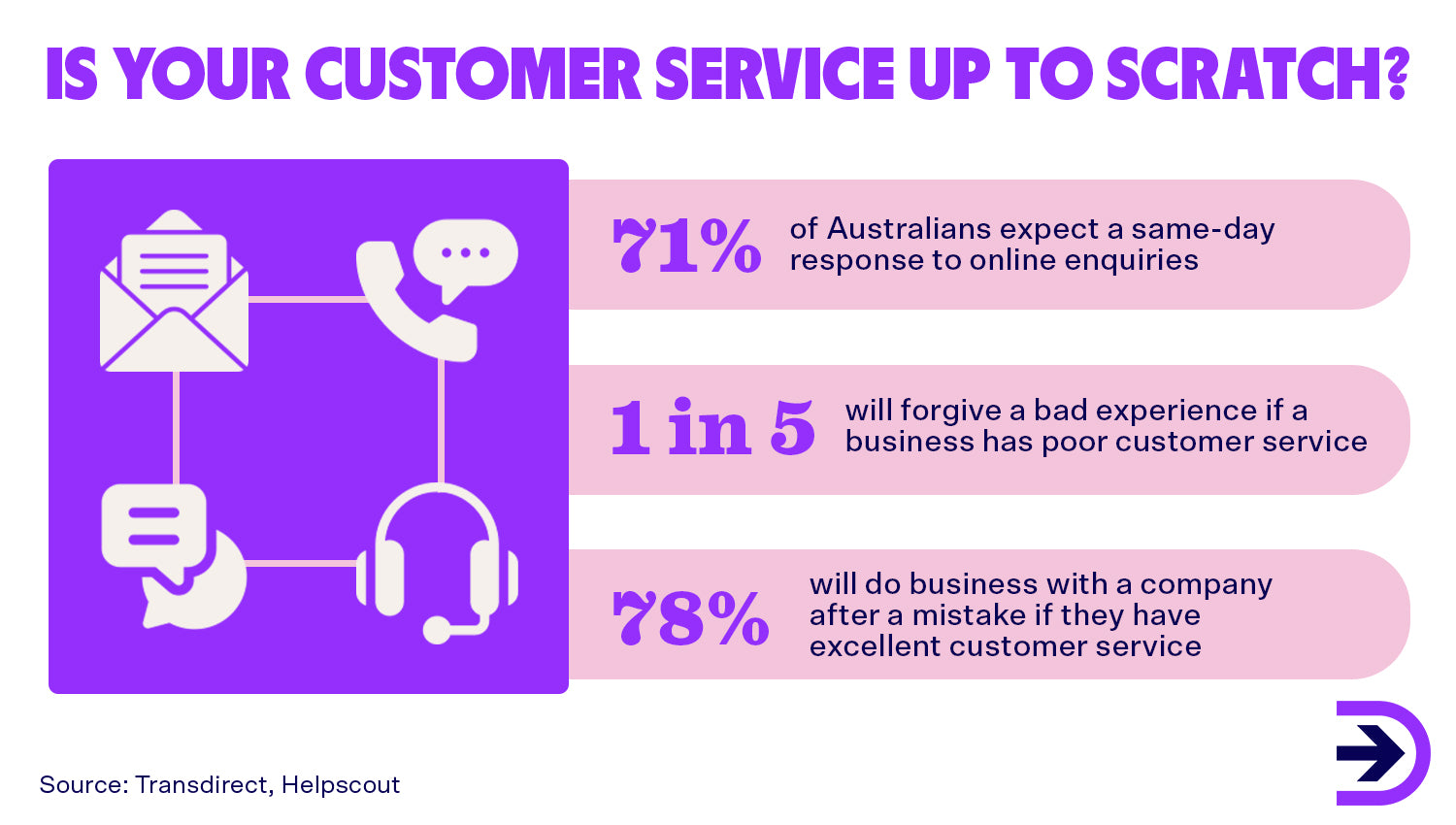
Here are some ways to improve customer service and enhance the customer experience in the face of shipping delays.
Offer real-time tracking
Order tracking is an essential service for 84 per cent of users seeking a positive checkout process. Additionally, 34.7 per cent of customers said they were more likely to return to a brand that offers real-time order tracking. Tracking their shipping status gives customers a sense of security and control, which are invaluable for building trust. It also allows them to plan ahead, which is useful for high-value packages or deliveries where a signature is required. It will free customer service representatives from answering delivery enquiries, and businesses can automate customised shipping updates and delivery notifications via SMS or emails, which is important as 76 per cent of customers want continuous SMS communication throughout the shipping process. Thankfully, modern route planning and optimisation software make tracking a breeze for many courier companies.
For Dropshipzone Retailers, tracking will be sent to you via email after purchase, or you can view tracking information by going to “Orders History” under “Shipped” in your account. Shopify users can add tracking numbers automatically through the Sofortig app.

Enlist the help of chatbots
Customer service chatbots provide customer assistance via text chat or voice command. They can be made with AI and programmed to self-learn which allows them to improve over time. Other chatbots are rule-based, which gives them a flowchart style of communication. The main benefit of chatbots is that they can deliver instant responses to customer enquiries, even outside of business hours. They can answer repetitive messages and FAQs, leaving customer service representatives free to tackle more urgent or complex enquiries.

Offer discounts for major delays
Offering discount codes or vouchers can ease frustration when it comes to delayed shipping. Not only does it encourage customers to return to a business even after a negative experience, but it also assures customers that they are cared for and their complaints will be taken seriously. For best results, deliver discounts in a personalised email.
Tip 3: Explore Different Shipping Methods
If your current shipping method is causing customers to jump ship, you may need to explore other options. This usually involves changing your shipping pricing strategy, working with different shipping carriers, or renegotiating delivery terms with suppliers. The right shipping method will lead to higher conversions, higher average order values, and happier customers.
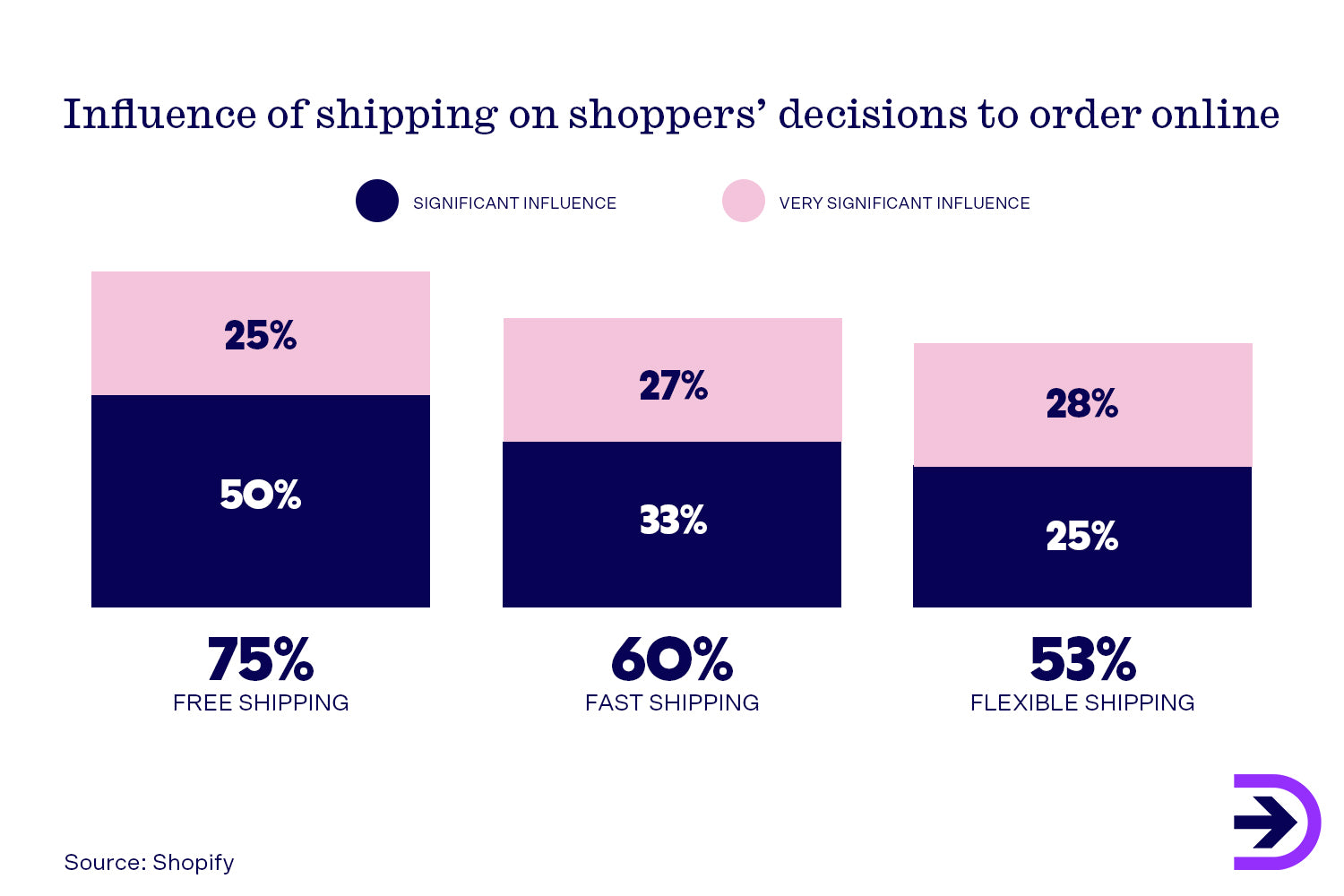
Shipping Strategies
Expedited shipping
Delivery options that take three days or less are considered expedited. Vehicles carrying expedited shipments typically make fewer stops, which means they will arrive faster and are less likely to arrive damaged. Offering expedited shipping can be an expensive strategy, but it can also be fruitful as around 60 per cent of shoppers will pay for faster delivery. Each delivery company will have their own version of expedited shipping and charge different rates. You might be able to mitigate the additional costs by passing some of the added cost to buyers or offering it only on orders that hit a minimum spend.
Flat-rate shipping
Flat-rate shipping is a strategy where customers pay a fixed price for shipping regardless of package size, weight and destination. Businesses may offer different flat fees depending on minimum order spend, expedited shipping options, or specific product dimensions. Flat-rate shipping takes the guesswork out of shipping costs, making it convenient for customers. However, it can be more expensive for businesses especially when shipping oversized products. This method works best for businesses with a limited product range with similar profit margins.
Free shipping
Free shipping is an incredibly effective shipping strategy that can increase conversion rates by up to 20 per cent. It is so effective thanks to a psychological phenomenon known as the “zero price effect” wherein consumers disregard typical decision-making processes because an item comes with free delivery. There are many ways to offset the lost profit margins from free shipping. Businesses can increase the product price, implement a minimum order spend or quantity, increase their average order value through promotions or upselling, or only offer free shipping on domestic deliveries. As well as increasing costs, budget-friendly free shipping rates may lead to worse experiences for customers. While 87 per cent of customers are willing to wait 5-7 days for free shipping, excessive shipping times will negatively impact their perception. You can find out more about how to implement a free shipping model with our blog “How to Apply the Free Shipping Model”.
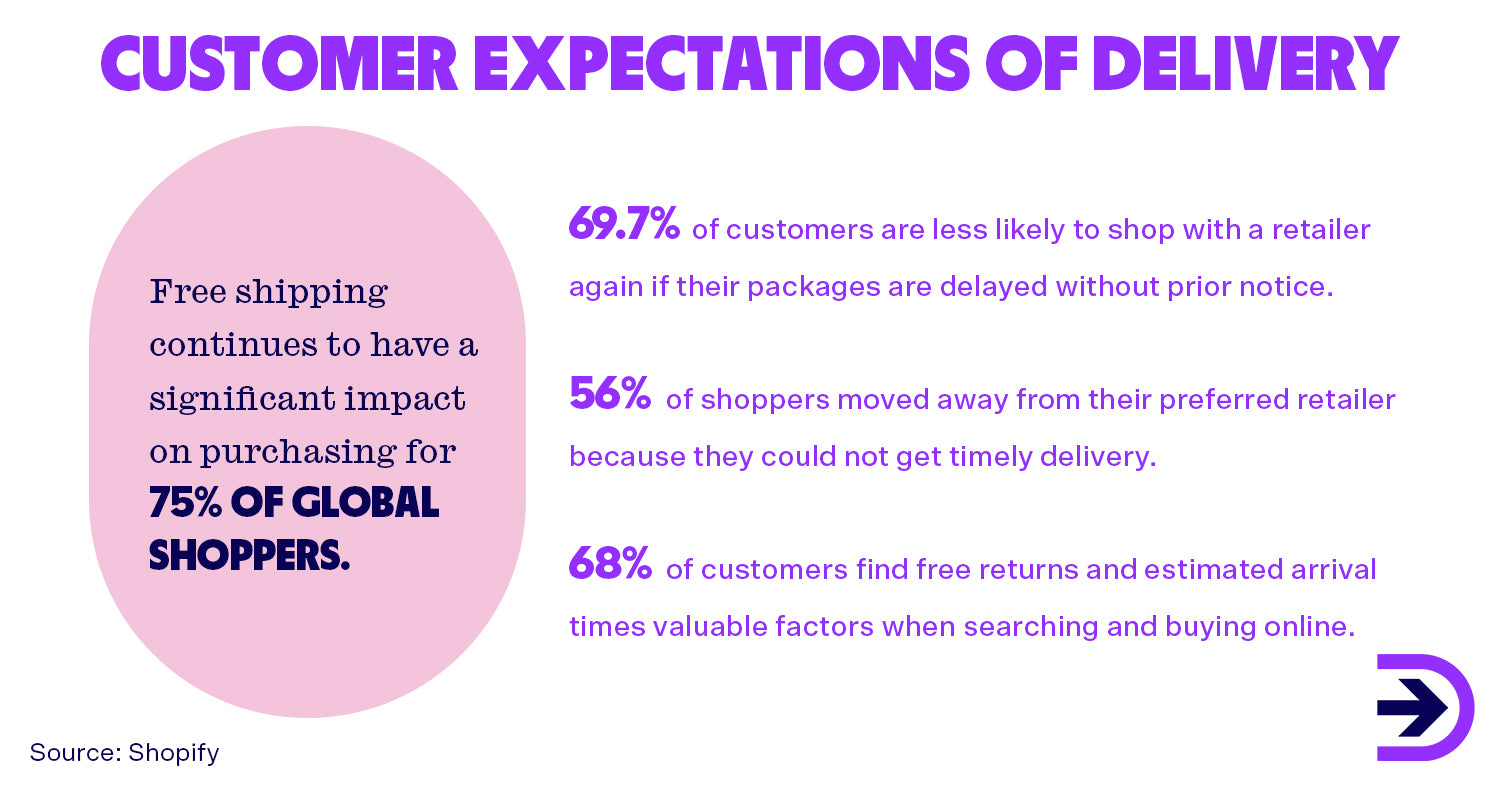
Australian couriers
There are a wide variety of couriers in Australia that work with dropshipping suppliers and retailers to ship products around the world. Couriers will differ in terms of shipping rates, delivery speed and services offered.
-
Allied Express: An independent courier and freight service. Offers a vast range of delivery services with a fleet of over 1000 vehicles.
-
Australia Post: A government business enterprise and reliable service provider. Offers a vast range of collection services and operates an extended workforce of 80,000 individuals.
-
Aramex: A leading global provider of comprehensive logistics and transportation solutions. Affordable, but not as reliable as other companies.
-
DHL: A private logistics company operating in over 220 countries and territories, but with a smaller presence in Australia. Reliable but expensive.
-
Couriers Please: A company that works with many Australian brands and has a comprehensive fleet of heavy-duty vehicles.
-
FedEx: An international courier with a reputation for excellent B2B delivery capabilities. Generally more expensive but best for shipping in bulk.
-
Hunter Express: A courier service that specialises in small to medium-sized businesses and offers multiple express delivery options, including same-day delivery.
-
StarTrack: An Australia Post-affiliated business specialising in express shipping, with a fleet of over 16,000 vehicles and 11.9 million delivery points across Australia.
-
Toll: A major logistics company that offers express delivery, freight, distribution, port, maritime, airport and aviation services. Good for residential deliveries but not as cost-effective as other companies.
When choosing the right courier for your dropshipping store, you’ll not only want to consider the cost and speed of delivery but whether they offer proof of delivery, comprehensive tracking, parcel insurance, and good customer service.
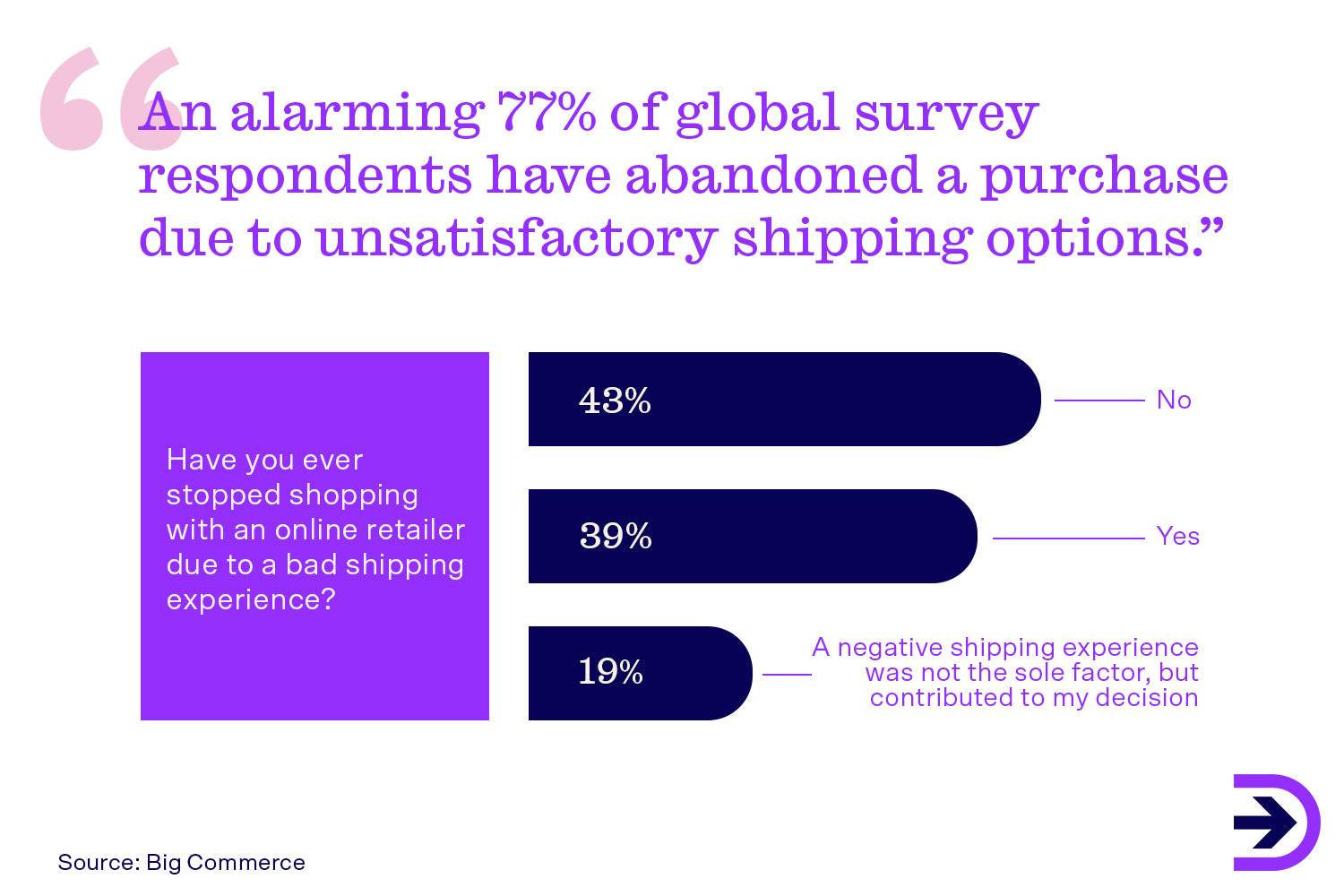
What Is the Fastest Shipping Method for Dropshipping?
For local deliveries, the fastest shipping method is through land freight. For interstate or international deliveries, air freight may be the way to go. However, the fastest way to get parcels to your customer’s door is to choose your couriers carefully. Dropshipzone takes the guesswork out of choosing reliable couriers by automatically pairing you with our nominated partners for competitive pricing and efficient delivery.
Tip 4: Find Suppliers in the Countries You Are Shipping To
For businesses looking to sell products internationally, using local dropshipping suppliers in the country of choice will reduce processing times and make the shipping process more streamlined. Working with suppliers in other countries has an array of advantages, including access to a larger target market, more significant profit margins and opportunities to scale and expand. But, it requires effective communication and monitoring for long-term success. You may choose to work with a supplier with multiple locations across the globe, or you may work with multiple suppliers that manufacture the same or similar products. All of Dropshipzone’s Suppliers are based in Australia, and we work with local courier companies to deliver customers’ parcels on time. Our diverse range of products also ensures that you can find multiple suppliers in the event of delays or understocking. Find out more about choosing the right suppliers and working with multiple suppliers on the Dropshipzone blog.

Make Ship Happen With Dropshipzone
Dropshipzone takes all the guesswork out of shipping by connecting retailers with experienced, reliable and affordable couriers across Australia. We offer competitive shipping rates to keep retailers happy, and fast shipping to keep your customers happy. We make it easy to work with multiple reliable suppliers so you can rest assured there will always be products available. We also offer round-the-clock customer service that is tailored to your unique business needs. With a wide range of dropshipping products across all categories, regular promotions, no minimum order spend and a comprehensive learning centre, it's easy to see why we are the leading B2B2C ecommerce platform in Australia. Eliminate shipping fears and avoid last-minute shipping surcharges. Sign up for free today, set up your online store and start shipping products right away.
